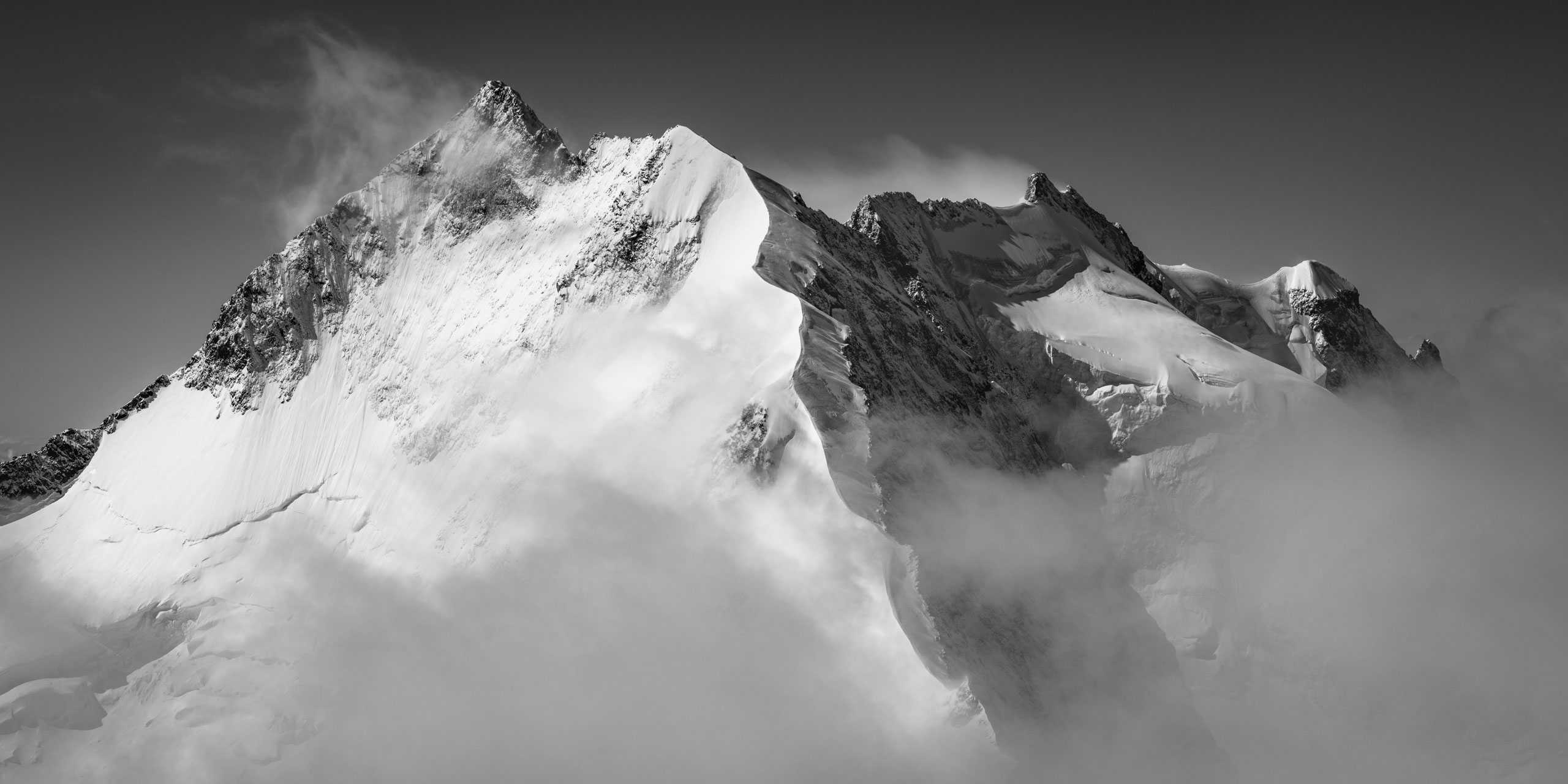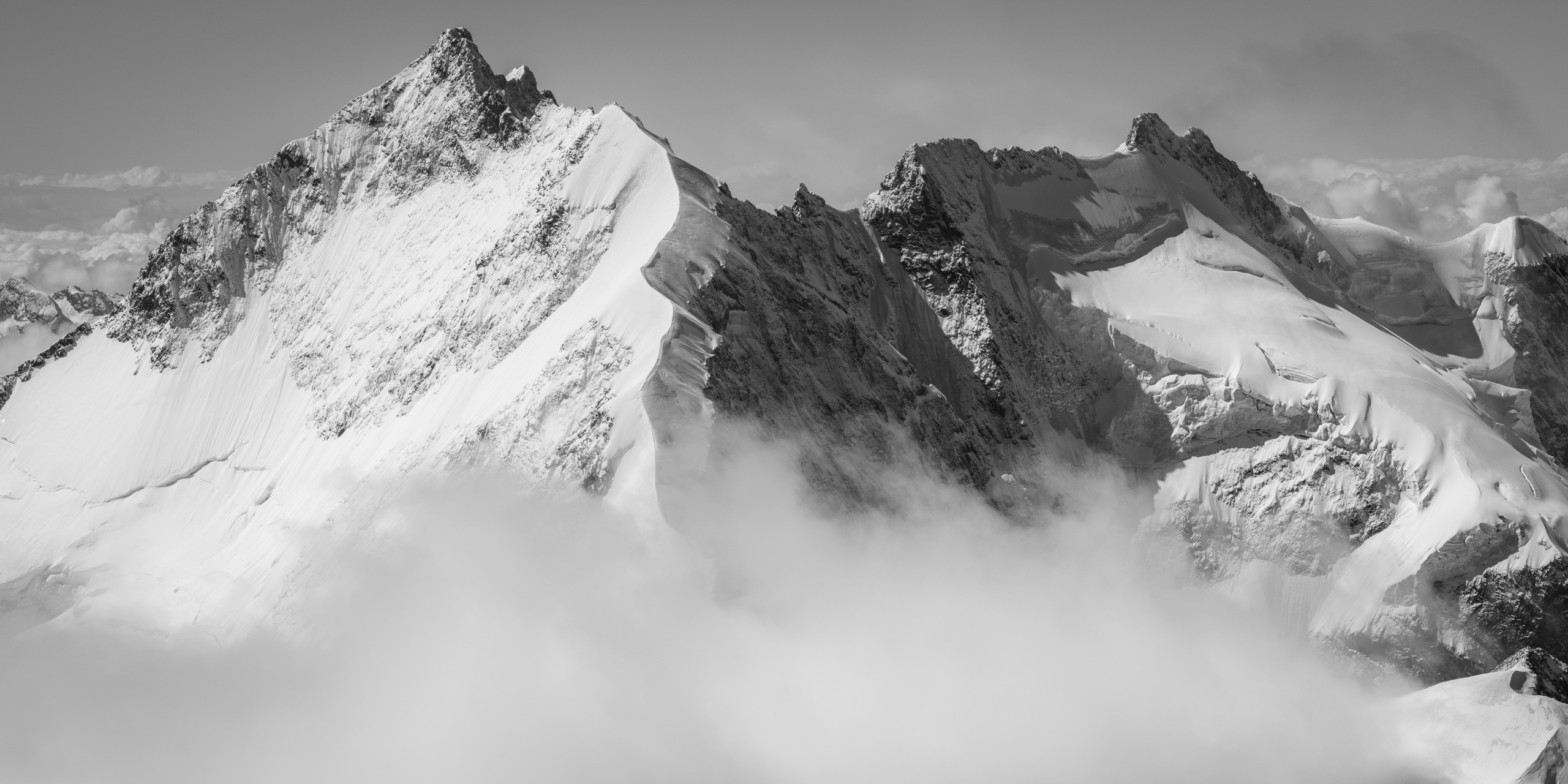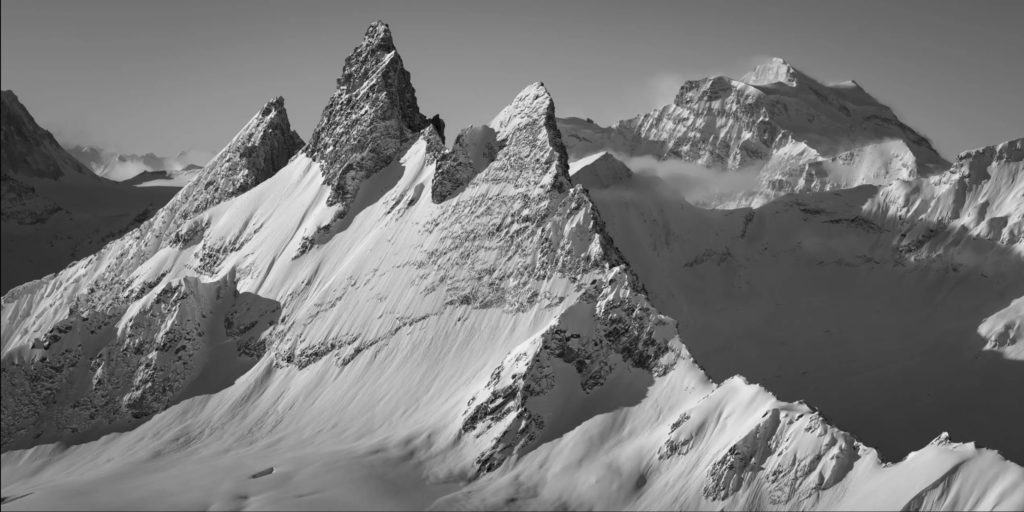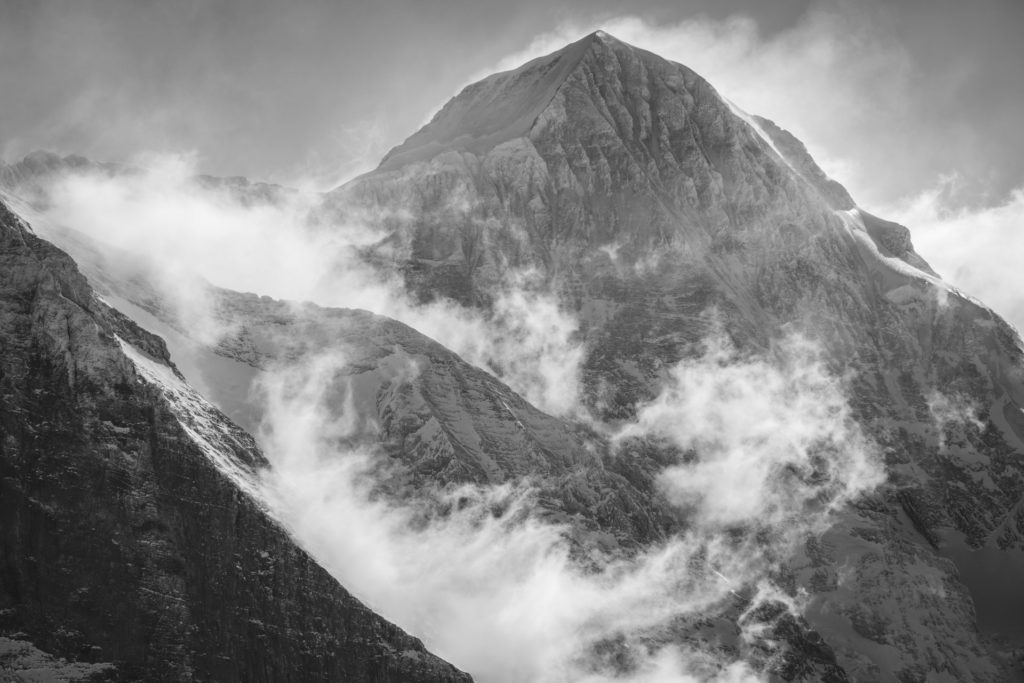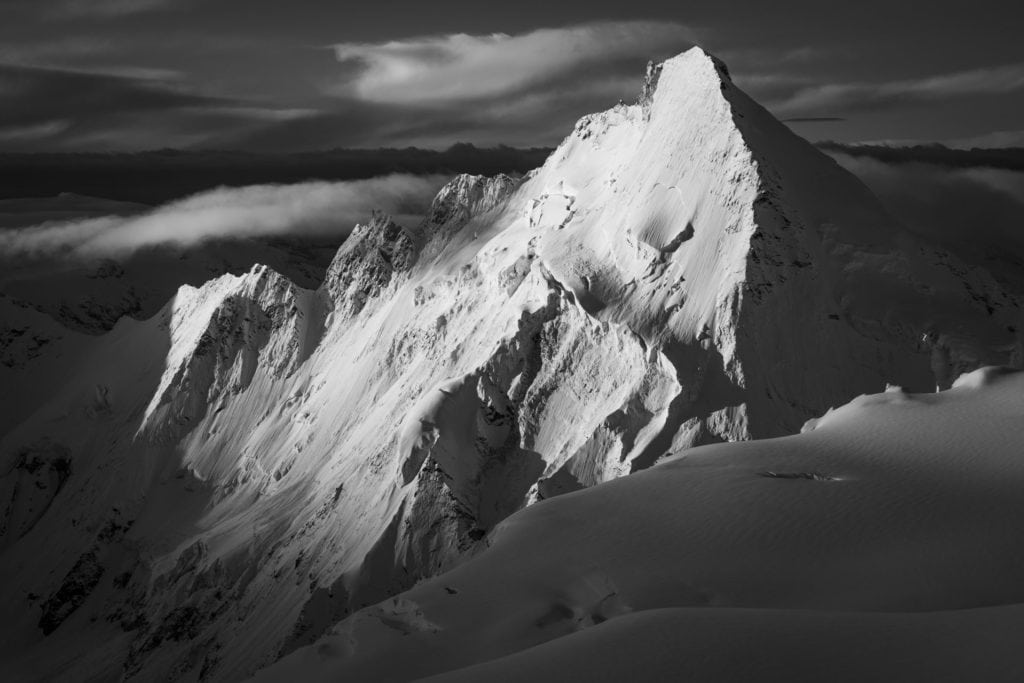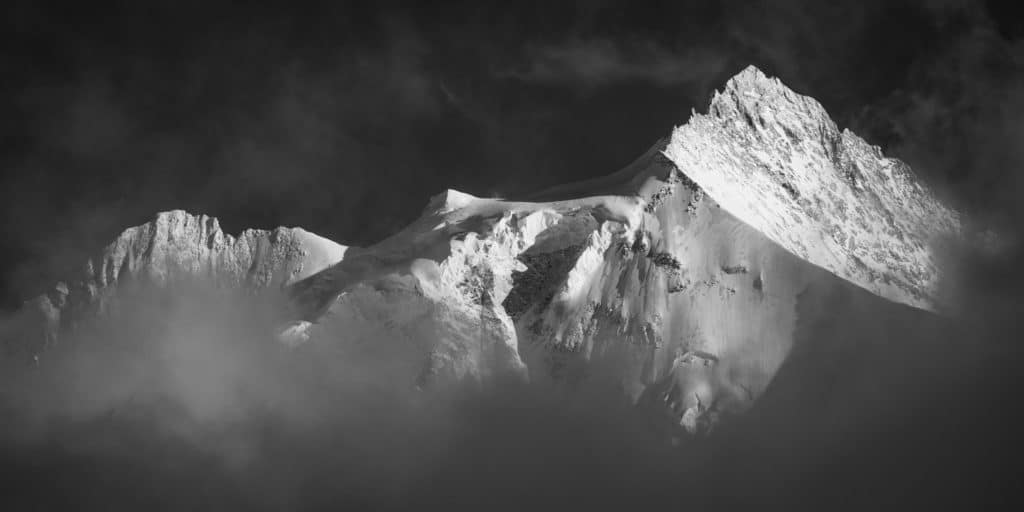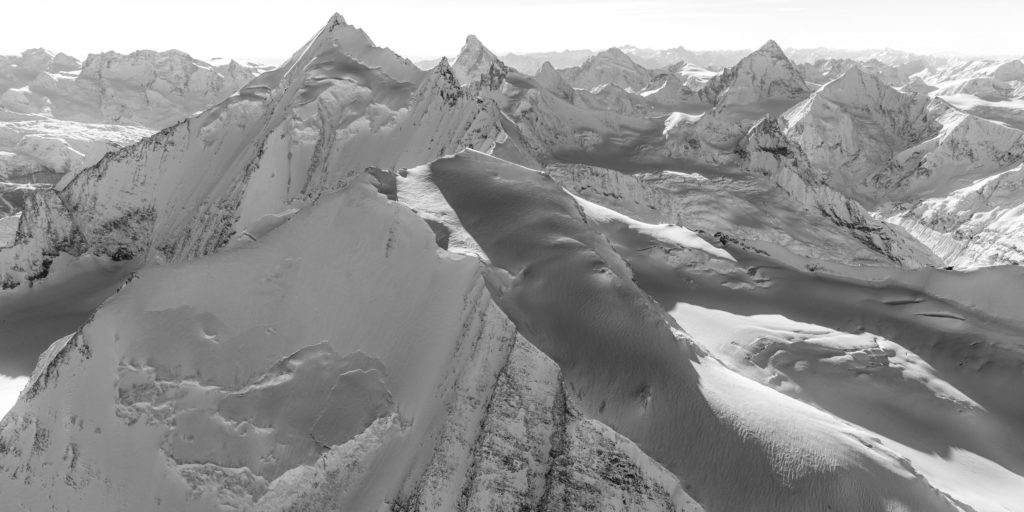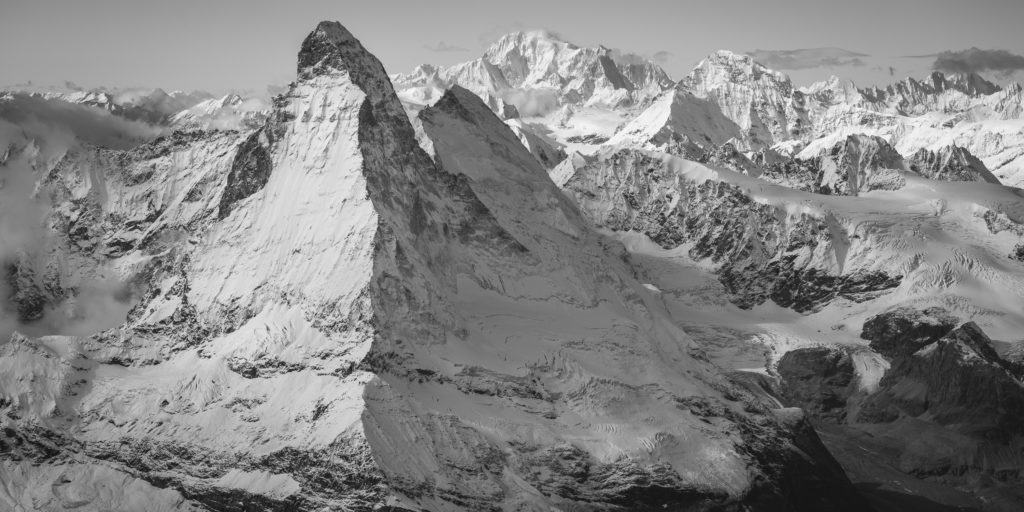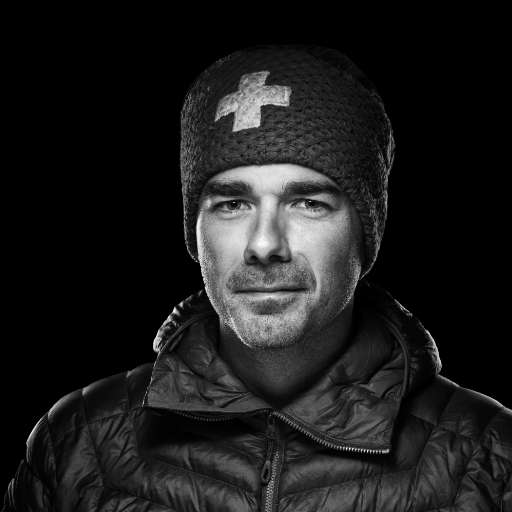Like a solitary hero embodying greatness, the Piz Bernina rises over 4000 metres into the sky of the Swiss Grisons. Carried by the splendor of Biancograt, the mountain joins the Italian Alps through the Spallagrat. But beyond the intertwined glaciers and rocks, can you hear the story of this fierce king? The rustle of an indomitable land in search of infinity? Here's the story of Piz Bernina, queen mountain of the eastern Alps.
History of Piz Bernina : Birth of a giant at summit in Graubünden
summit The highest mountain in the Bernina range, Piz Bernina rises to 4048 metres on the border between the Swiss and Italian Alps. The only giant over 4,000 metres in the eastern Alps, it is also one of the most isolated. Beyond the valleys and glacial lands, Piz Bernina reveals its treasures only to the most determined. To the north, the Pizzo Bianco leads to summit du Piz Bernina via the Biancograt, a flamboyant ridge which, from shadow to light, invites us to the sublime. To the south, the Spallagrat crosses the antecima of La Spedla, otherwise known as Punta Perrucchetti, to invite us into Italy. Guardian of a wild and opaline nature, Piz Bernina watches over the glaciers that flow at its feet. To the west, the Tschierva glacier leads to the Roseg valley, while to the east, the Morteratsch glacier flows through the Morteratsch valley to the Bernina valley.
Piz Bernina emerged from the Earth at the dawn of time. The tutelary colossus of the canton of Graubünden, it is the result of the clash between the Eurasian and Adriatic tectonic plates. Their split sheets fight hand-to-hand, each wanting to extract the best from the other. They bend and overlap, until one day a hybrid creature is born from their intertwined bark. Titan of Adriatic rock on Eurasian soil. At a time of Alpine orogenesis, Piz Bernina owes its brilliance to the symbiosis of its roots and its eminence.
The mountain appears to be made of granite. But don't be fooled when you step onto its ridges. At Piz Bernina, there's no trace of the quartz, mica and potassium feldspar that make this magmatic rock so beautiful. Here, black combines with white to give the mountain an exceptional appearance. Diorite replaces granite. The nuance between these two types of plutonic rock is minute, but very real. Just as the truth sometimes lurks in the shadows, Piz Bernina invites us to explore its steep walls and discover its true essence. And if you can't climb summit, venture along the Morteratsch valley. On this path dotted with Bernina diorite, a mixture of white plagioclase feldspar and black hornblende, you'll appreciate the richness of this unique mountain.
First ascent of Piz Bernina : Over 4000 metres in the Swiss Alps
An elusive mountain lost in the immensity of the Alps, the Piz Bernina lived hidden from human view. As early as the 15th century, the pass linking the Engadine to the Valtellina was christened the Bernina Pass. The term spread from the alpine pastures to the valleys, without ever reaching the highest peaks. summit remained in the shadows until Johann Coaz thrust it into the spotlight. Conqueror of Piz Bernina, the mountaineer named it after the massif over which he reigned.
At first light on September 13, 1850, topographer Johann Wilhelm Coaz left the valley with his guides, brothers Jon and Lorenz Ragut Tscharner. As there was no refuge in the vicinity of Piz Bernina, they embarked on an interminable and perilous expedition. The mountaineers began the long traverse of the Morteratsch glacier before tackling the countless crevasses of the Labyrinth. Avoiding falling seracs, they managed to reach the eastern ridge leading to summit du Piz Bernina. Suddenly, Lorenz Ragut Tscharner slips. Just a few metres from their arrival, the guide stumbled, only just caught by his fellow climbers. His fall would certainly have been fatal, but they had just saved his life.

The team comes to their senses and everyone concentrates on the last few metres to the summit. Around 6 p.m., they finally take their first steps at summit . Their joy is immense, their fatigue overwhelming. But at last they can breathe, dazzled by the panorama that unfolds before their eyes. All the peaks of the massif salute their courage as the horizon reveals a fabulous spectacle. From the Tyrol to the BerneseOberland , from the Valais to the Barre des Écrins, the Alps display their most beautiful landscapes. Overlooking the canton of Graubünden, Johann Coaz plants the flag of his native Switzerland in the rock. He had succeeded where no one else would have imagined climbing. Moved and proud of his achievement, he decided to name this impregnable bastion Piz Bernina. Thus giving the mountain a place in history.
Thirty years later, in February 1880, Piz Bernina gave way to man for the first time in icy winds. Cecil Watson, accompanied by guides Christian Grass senior and Valentin Kessler, made the first winter ascent of the Bernina's highest summit . A sensational feat that instills in the hearts of even the most reckless of climbers a deep desire to tackle the mountain.
Ascent of Piz Bernina via the normal route: Spallagrat in majesty
Over the decades, the southern slope of Piz Bernina has inspired mountaineers to open up numerous routes. But it all began on June 23, 1866, when Francis Fox Tuckett and Frederick Augustus Yeats Brown made the first ascent of Piz Bernina via its southern ridge, the Spallagrat. Leaving Alpe Foppa around midnight with their guides Christian Almer and Franz Andermatten, they reached summit of Piz Bernina in the late morning, before descending to Pontresina. The normal route to summit is now open to men. Nowadays, it passes through the Marco e Rosa hut, overlooking the Fuorcla Crast'Agüzza, to reach La Spedla and follow the south ridge of Piz Bernina to its conclusion.
This race can be skied as soon as spring returns. On December 28, 1905, F. Otto and Martin Schocher were the first to attempt it. Intrepid mountaineers and members of the Ski Club Bernina founded the previous year, they skied up the mountain to the Crast'Agüzza pass. They then took off their skis to reach summit du Piz Bernina via the normal route. Beyond La Spedla, they re-equipped to ski back down to Pontresina. The end of a memorable race.
Climb Piz Bernina via Biancograt : the flamboyant ridge of the Eastern Alps
Anyone who ventures into Graubünden knows the splendour of the Biancograt, a majestic and implacable ridge that crosses the Pizzo Bianco to the north, guiding the mountaineer to the summit of the Piz Bernina. With its light and shade, Biancograt fascinates Alpine lovers who, between earth and sky, dream of climbing it. On August 12, 1876, Henri Cordier and Thomas Middlemore were the first to attempt to climb Piz Bernina via its northern ridge. Alongside their guides Johann Jaun and Caspar Maurer, they managed to reach the top of the Pizzo Bianco, at 3994 metres above sea level. But when they saw the distance separating them from Piz Bernina and the gaping chasm opening up in front of them, they lost all hope and turned back. Their bravery had been rewarded at Biancograt .
It took another two years before, in 1878, Paul Güssfeldt finally inaugurated this access route to Piz Bernina. Accompanied by guides Hans Grass and Johann Gross, he triumphed over Biancograt , which escorted him to heaven on a glittering thread. On March 15, 1929, Glaner Carl J. Kollmus and guides Casper and Ulrich Grass completed the first winter ski ascent of the Biancograt ridge.
This route via the north ridge of Piz Bernina is more difficult than the normal route. And yet, all climbers aspire to follow it one day. The ascent of Piz Bernina via Biancograt, followed by a descent via Spallagrat, is without doubt one of the most beautiful climbs in the Alps. The ridge, whitened by eternal snow, soars into the azure, taking the most daring with it. Nature offers us an unforgettable experience, and my heart still vibrates with the memory of it.
West face ascent of Piz Bernina : summit of a queen mountain
Beyond its remarkable ridges, the Piz Bernina attracts man to its summit by the presence of its frosted flanks. In August 1880, Hans Grass senior, Christian Grass junior and Benjamin Wainewright made the first ascent of the colossus via its west face. The climbers set off along the wall overlooking the Tschierva glacier, reaching Biancograt halfway between Piz Alv and Piz Bernina. Continuing their climb along the north ridge, they reach summit. Their tour de force inspired other climbers to conquer this west wall in their own way. Over the years, new routes were opened on this gigantic flank.
For almost a century, climbing the west face of Piz Bernina was a matter for sunny days. It wasn't until 1969 that the mountain finally decided to welcome climbers to this face in the dead of winter. On March 9, Heiz Bächli, Ruedi Bollier, Ivor and Rolf Ganahl, Hans-Peter Geier, Fredy Graf and Dieter Kienast achieved this exceptional winter first.
Climb the northeast face of Piz Bernina : A vertiginous expedition in the Bernina massif
As for the northeast face of Piz Bernina , it is reputed to be impregnable. But the man persists, never giving in to despair. The more nature stood in his way, the greater his ambition. On October 5, 1879, Abraham Ardüser, Hans Grass and Johann Melchior Ludwig achieved a real feat when they climbed the vertiginous wall. They paved the way for other climbers to follow in their own footsteps.
In March 1964, Paul Nigg, Otmar Wank and Salvatore Zala pushed the limits of Alpine success even further by completing the first winter ascent of the North Face of Piz Bernina. The challenge was so great, and the traverse so demanding, that they had to bivouac twice on the mountainside and spend a night at the Marco e Rosa hut before finally achieving their goal.
The history of Piz Bernina is marked by tumultuous epics. The undisputed master of the Bernina massif and queen mountain of the eastern Alps, it has made its isolation a strength. Highlighted by the prodigious wave of Biancograt, summit exults on the heights of Graubünden. And I never tire of climbing and photographing it, the beauty of its grey rock and white mantle filling me with joy and serenity.

